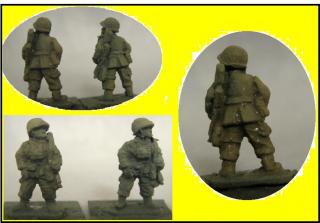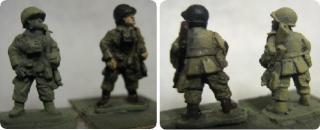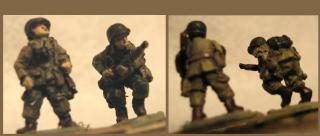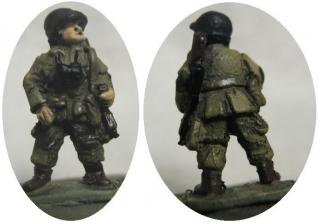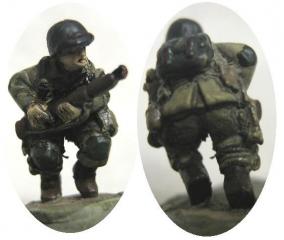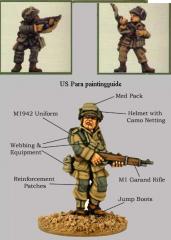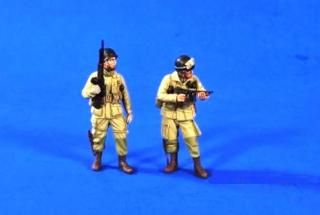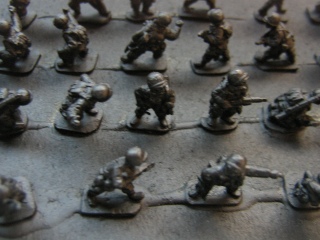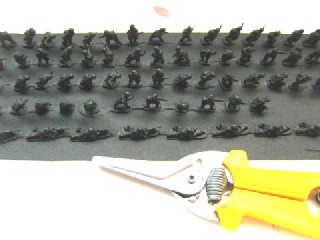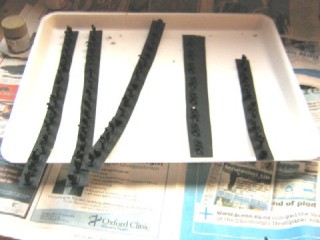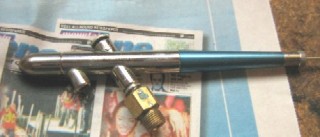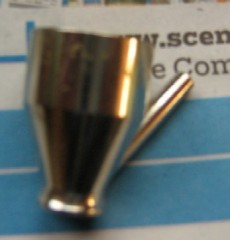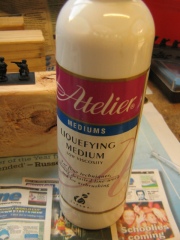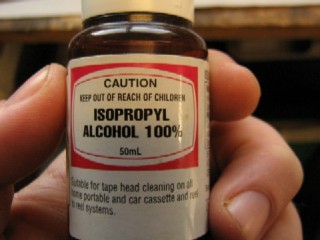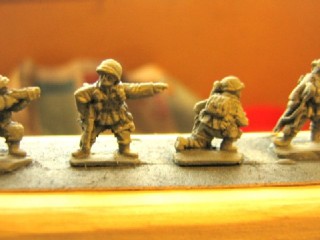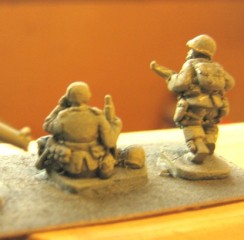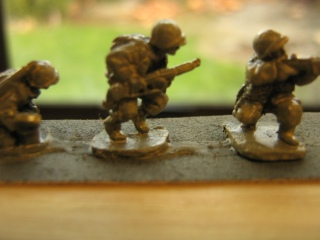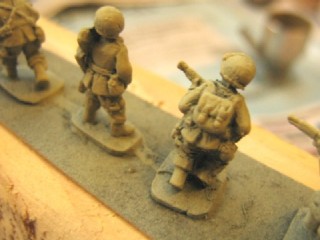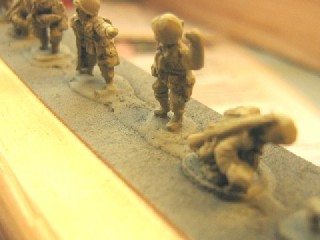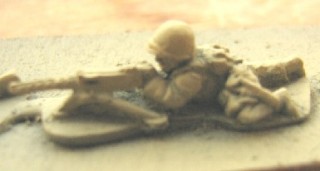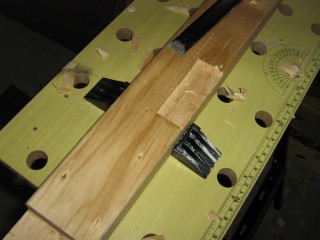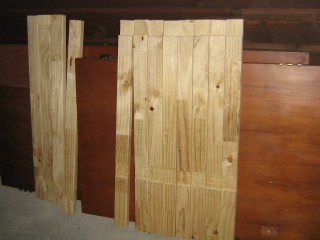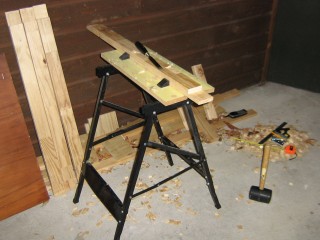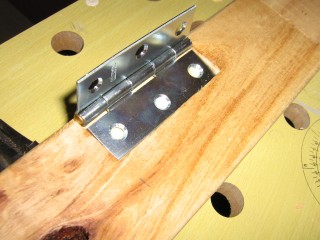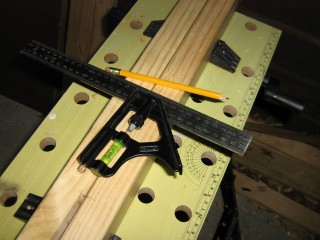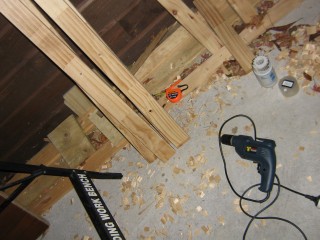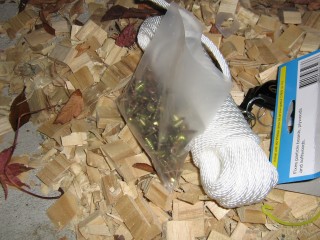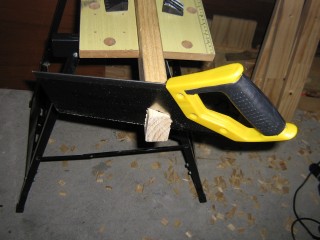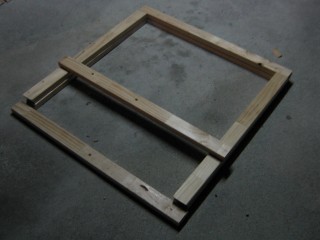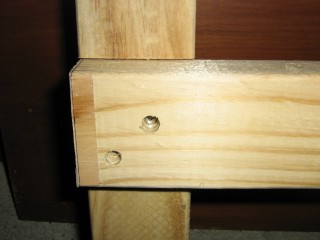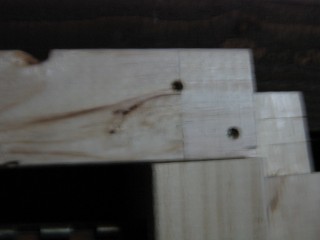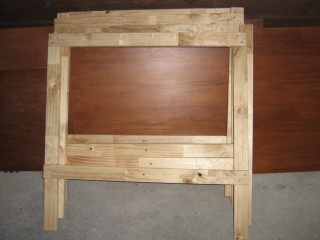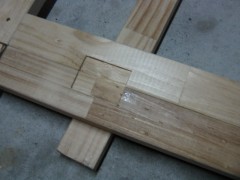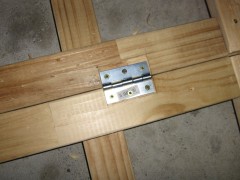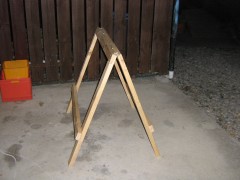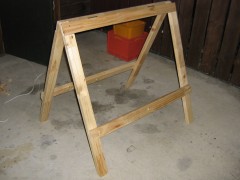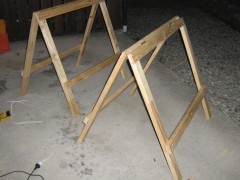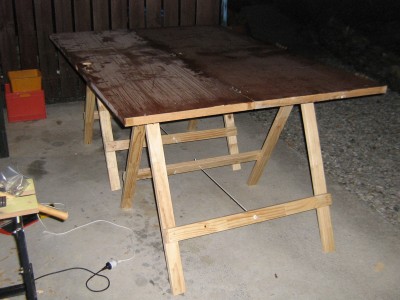OK as promised some (actually alot!) pictures of my DIY build a set of game table legs
Chiseling the hinge rebutment in.
Almost finished legs and stanchions…
Work bench and tools.. the bench is a bit flimsy and i had to work into the wall when using the mallet… to keep it all steady.. but a suitable work bench non the less. I’m working in a well lit car port beside the garage
Setting the hinges. Later found I did this wrong… you need to set the pivot outside of the face.. to sit proud.. otherwise the legs wont close flat. I now need to chisel the in side face to allow the legs to close. And get BIG hinges. The distance from face to first fixing hole is what is important.
Using the completed hing or top rail as a template for the remaining three
Almost finished sections, note the hollow core doors in back ground… they will be the table tops.
Also note all the half joints I made. 16 in all. Plus 8 recesses or cut-in joints.
Getting set to assemble. I decided not to use dowel joints.. and I decided not to use bolt joints (even though i bought bolts! I ended up with 4 posi-drive square head screws per half joint. No glue.. even though I intended to… I’m such a hypocrite to my own ideas of perfection!
Screws and corded rope (not sash cord) 6mm thick cord.. 10m long and pretty cheap too. Thanks Zeneth corporation!
Tenon saw required… cut a slope to the feet… no special measuring but no un-accurate either — but doesn’t answer why one leg is 5mm shorter than all the other seven?
Dummy set up… and the timber I decided to put it together too… the timber work passed muster
A side shot of the half joints..a little rough… but still pass in High School classes all the same
Assembly… started with the lower cross rail. I “starter-hole” drilled these and counter sunk the hole with 8mm drill.. because the screws were 50mm screws and the needed to reach the timber into which they have to hold
Then I plain drove the posidrives into the half joints.. two on diagonals on one side and opposite orientation on the other.. I had two joins feign splitting… ouch
All frames assembled.. looks great
Set the frames out head to head to fix hinges… I would have been clever to leave about 5mm between the heads at this stage.. but I was too eager to some chisel work re reset the pins into the frame faces..which in retrospect was a really really really clever idea… NOT.
In the pic above… I have screwed the hinges in with the 30mm posi-drives.
The timber is ceiling batten timber… It is 37mm thick… the screws counter sink themselves.. I had a few poke the points through the other side.. so be aware that posidrives will sink up to 3mm into soft wood.
Finished legs.. here they are doing the Ruhmba… and the Tango.. lets face it they were made for each other.
And here they are supporting a pair of lazy teenager doors… they jut tend to lay around at present.. but when they mature and loose all their disgusting piercings and hardware.. the will be strong supporting members of the war games table community.. but that is another story…
hope you enjoyed this.. G night.


